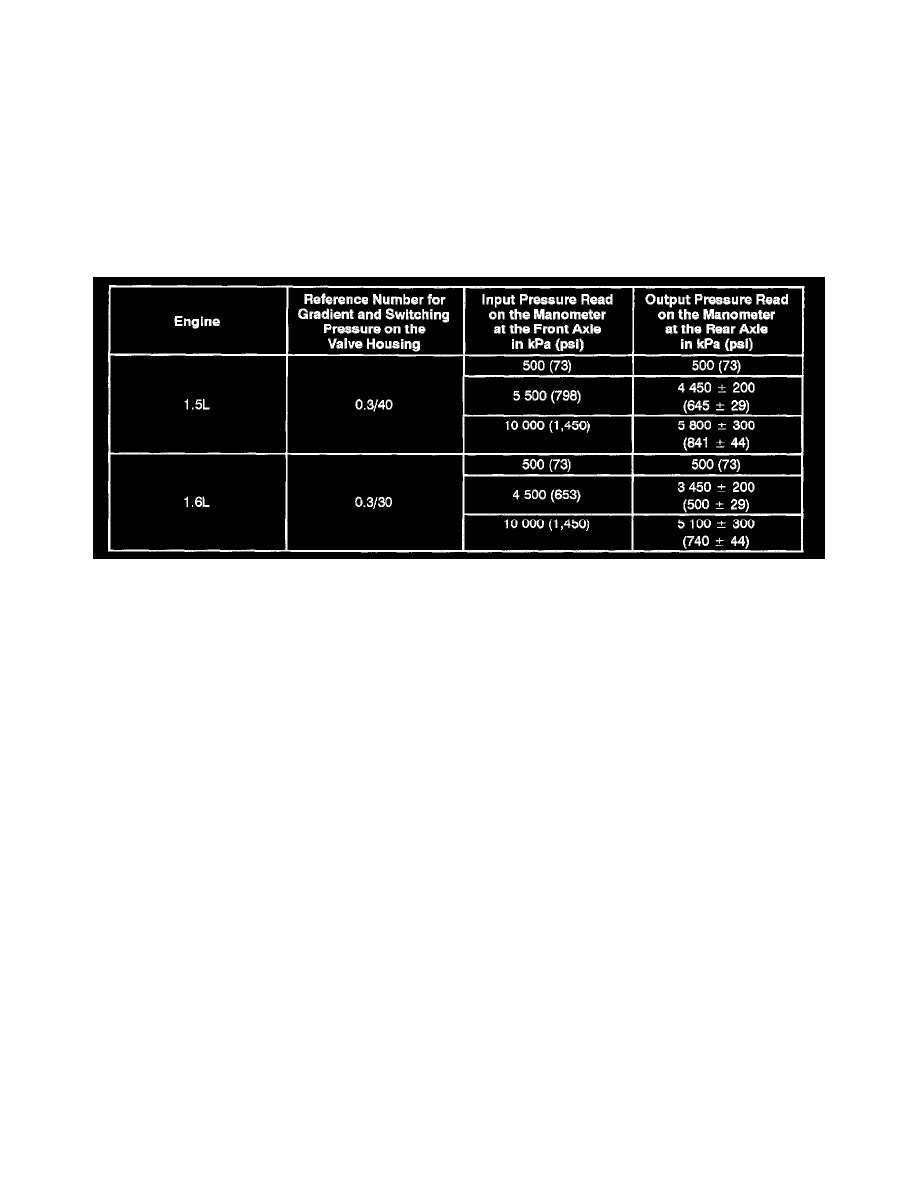Lanos S Sedan L4-1.6L DOHC D-TEC MFI (2001)

Brake Proportioning/Combination Valve: Testing and Inspection
CHECKING BRAKE PROPORTIONING VALVE
Use two brake pressure gauges to check the brake proportioning valves that are attached to the master cylinder on non-ABS braking systems. These
valves limit the outlet pressure to the rear brakes after a predetermined master cylinder pressure has been reached. (On vehicles equipped with ABS,
the hydraulic modulator assembly controls the hydraulic pressure to both the rear wheel cylinders and the front calipers.)
When checking the brake proportioning valves, be sure that the hydraulic line pressure is measured simultaneously and diagonally on the front and the
rear axles.
To measure the pressure, use the following steps:
1. Remove the bleeder valve and install a pressure gauge to one of the rear wheel cylinders.
2. At the diagonally opposite front brake caliper, remove the bleeder valve and install another pressure gauge.
3. Build pressure by pressing firmly on the brake pedal several times. (The pressure indicated on the gauge is not regulated and represents the actual
brake system hydraulic pressure.)
4. Build pressure until the test values in the following proportioning valve test chart are achieved.
Important: It the pressure exceeds 10000 kPa (1,450 psi), the pressure reading on the rear gauge will not be accurate.
5. Remove the gauges from the tested brake circuit.
6. Reinstall the bleeder valves.
-
Tighten the bleeder valves to 6 Nm (53 inch lbs.).
7. Repeat the test on the remaining front/rear brake circuit.
8. Reinstall the bleeder valves.
-
Tighten the bleeder valves to 6 Nm (53 inch lbs.).
